Well, a little over three months after my original column, here I am again talking about conference realignment. A whole lot has changed since late November.
The news that the Massachusetts athletic department would be leaving the Atlantic 10 and FBS independence for the Mid-American Conference in 2025-2026 was a little tough for me to swallow, if I’m being honest. When it first broke, I wasn’t mad; just grateful that it wasn’t Conference USA (a changed opinion from what I initially believed in November). But, as time went on, it was, and still is, difficult for me to justify the move.
I get it, I totally do. I’ve gotten it since November. In 2024, football doesn’t just drive the conference realignment bus, it takes control of the wheel like it’s jostling for position with Bubba Wallace. But I can’t look at these moves with anything but a hoops-focused mind. And when it comes to basketball, men’s and women’s alike, one thing all UMass fans can agree on is that the move from the Atlantic 10 to the MAC is not a lateral one.
I say this with no ill intention towards the MAC. The MAC has been a reliable friend in college athletics for me throughout my entire life. Hailing from the suburbs of Buffalo, I’ve been a supporter of the MAC’s Buffalo Bulls since I first started following college athletics. I’ve seen the good and the bad of the conference, its benefits and its flaws. I witnessed a Bulls basketball program go from 22nd in KenPom to 345th within five years. I’ve been to packed Saturday afternoon showdowns at UB Stadium against the conference’s best football squads, followed by desolate Tuesday night affairs versus the conference’s worst.
But the basketball portion of the MAC is a far cry from the A-10. Even after removing the Minutemen from the equation, there are six A-10 schools in KenPom’s top 100 at time of writing. The MAC has zero, and only one school (Akron) is even in the metric’s top 150. On the women’s side, there are four top 100 A-10 schools compared to two in the MAC.
The 2022-23 season was the first time the Atlantic 10 didn’t get two men’s teams into March Madness since 2005, and they’ll be back to getting two-to-three bids yearly shortly. The MAC hasn’t been a multi-bid league since 1998.
The numbers paint a clear picture: this is a downgrade in every sense of the word for UMass basketball. But with the school’s current level of investment, it’s far from a death sentence. Here’s some info and thoughts on what Massachusetts fans should expect out of their new conference on the hardwood.
Men: Meet the “Ohio Four”
Modern MAC men’s basketball is thought of by me as being led by the “Ohio Four” (name created by yours truly): Akron, Kent State, Ohio and Toledo. Two to four of these schools will be contenders yearly, and apart from Buffalo’s late-2010s run, one of them typically wins the conference tournament (at least one of the first three: Toledo hasn’t appeared since 1980!). This year, it’s the Zips leading the conference, followed by the Rockets and Bobcats in that order. The Golden Flashes are the odd team out, sitting in seventh.
Why are these four at the top, you might ask? Well, in addition to having the most resources invested in hoops, the “Ohio Four” have managed to hang on to their coaches, a blessing in the mid-major world. Toledo’s Tod Kowalczyk and Kent State’s Rob Senderoff are on seasons 14 and 13 with their schools, respectively. Akron’s John Groce is in year seven, while Ohio’s Jeff Boals is in year five. These coaches have built up positive cultures at their respective schools and they, along with players and fans, have reaped success because of it.
If Frank Martin remains with the Minutemen through their first couple seasons in the MAC, which I see as likely, a similar story may await UMass men’s basketball.
Women: Two at the Top
The women’s basketball scene in the MAC is led by two heavyweights: Ball State and Toledo. Massey has both programs ranked in the top-70 nationally, putting the MAC’s top two on a similar playing field as the A-10’s top two programs this season, Richmond and Saint Joseph’s.
The Rockets have a one-game lead in the conference at time of writing, sitting at 21-4 (13-1 MAC). Led by head coach Tricia Cullop, Toledo pulled off a shocker in the NCAA Tournament last season, defeating Iowa State as a 12 seed before falling to Tennessee in the round of 32.
Ball State also has four losses on the season, and of its 23 victories, some have been over marquee names. At the Sun Coast Tournament in December, the Cardinals took down Pittsburgh and Georgia by 11 points and 1 point, respectively. In conference play, Ball State handed the Rockets their lone conference loss thus far, winning by 14 at home before the Rockets got their revenge in late February.
For Minutemen, Initial Success is Necessary
If you dropped this season’s Minutemen into the MAC, KenPom would project either a 15-3 or 16-2 record in conference play, along with a two-horse race for the conference’s auto bid between UMass and Akron. However, this has been the worst season for MAC men’s basketball since KenPom began creating conference rankings in 1999. The conference typically sits somewhere between 16th and 20th in the website’s rankings yearly, and I do expect a quick rebound from this year’s 24th-ranked performance.
Even at its current level of investment, which is more than likely the highest in the conference, it won’t be a cakewalk for the Minutemen to get the MAC’s bid into March Madness. There will always be a couple other schools that will give the program a run for its money. Some current players will likely transfer out before the move is made. No matter who’s on the roster though, the team should be contenders upon arrival, which is why the first three years of UMass basketball in the MAC are so important.
If the Minutemen secure an NCAA Tournament bid from the MAC in one or two of its first three seasons, it reinforces the positive direction the program’s headed in. The Massachusetts Collective can flaunt tournament appearances to interested investors. The coaching staff will gain a major foothold to use in the recruitment of high schoolers and transfers. The program can continue to consistently flourish.
However, even if UMass finishes near the top of the MAC in its first three seasons, no NCAA Tournament appearances coupled with increased football success may prove to be a lethal combination for Minutemen basketball. Football could take an even higher priority amongst the department and donors, with less regard shown to men’s basketball and other sports. UMass could morph into your average MAC basketball program, one that hopes to hit lightning in a bottle every eight years or so.
I’m not presenting the above scenario as fact: I do think there’s a chance that donors and collectives maintain the same level of financial support for Minutemen basketball, even if the program doesn’t meet expectations within its new conference. But I watched a Buffalo Bulls program go from mid-major stardom to the basement of Division I within five years, due to the belief that the program could simply coast off history. That belief was obviously wrong. I think striking while the iron is hot is crucial for UMass once it moves to the MAC, and I’m extremely intrigued to see how those first couple seasons shake out.
Warning: MACtion May Contain Ballers
Despite their middling reputation, the MAC still produces stars yearly. Here’s a fun fact for you: the MAC has had one pick in each of the last three NBA drafts. Those three draftees put the conference on par with the A-10 (three) and ahead of the Mountain West (two).
A potential reason I’ve found for this is that MAC teams’ offensive systems give stars more breathing room to do their thing. An extreme example of this was Emoni Bates with Eastern Michigan last season, as the forward took just under 16 shots per night. This season, there are three MAC players in the top eight nationally in field goal attempts per game.
Especially with guards, it doesn’t take long for MAC talent to emerge and either go pro or transfer up to a bigger school. Just this past offseason, three MAC guards transferred to power-conference programs (Curtis Jones from Buffalo to Iowa State, Kevin Miller from Central Michigan to Wake Forest, RayJ Dennis from Toledo to Baylor). All three are prospering at their newest stops, showcasing the talent level of the conference in the process.
Assorted Info
- The MAC features a smorgasbord of arenas. You have your cozy mid-major venues, like Bowling Green’s Stroh Center. You have your oversized, cavernous arenas that were built for a past fanbase, such as Ohio’s monstrous 13,080-seat Convocation Center (it remains to be seen if the Mullins Center will also fit into this category). You get a couple venues that have somewhat kept with the times, like Buffalo’s Alumni Arena and Akron’s James A. Rhodes Arena. One thing you do not get, however, is modern venues: only one arena in the MAC (Bowling Green’s) was built in the past 20 years.
- Unlike the A-10, MAC basketball tournaments are slightly exclusive. Of the 12 (soon to be 13? 14? 16?) teams in the conference, only the top eight on the men’s and women’s sides get to travel to Cleveland to compete for the conference’s auto bid.
- As a bonus for fans of both Massachusetts teams, the men’s and women’s tournaments happen during the same week at the same venue: Cleveland’s Rocket Mortgage FieldHouse. The men’s tournament has its quarterfinals on Thursday, semifinals on Friday night and title game on Saturday night. The women’s tournament has its quarterfinals on Wednesday, semifinals on Friday afternoon and title game on Saturday afternoon.
- The MAC has a TV deal for basketball with ESPN and CBS. Around 85 percent of men’s games and 95 percent of women’s games are on ESPN+. The remaining games are divided up between ESPN2, ESPNU and CBS Sports Network. A good MAC men’s team will typically get three to five conference games on national television, while a good women’s team will get one to two nationally televised.
- Despite their reputation as an average conference, the MAC is actually above average when it comes to men’s basketball attendance. The conference averaged 2,804 fans per home game last season which ranked 12th out of 32 Division I conferences. In the grand scheme of things, that’s not too far off from the A-10, which averaged 4,354 fans per contest. The Minutemen’s 2022-23 average of 3,580 fans would have put them fourth in the MAC, behind Toledo, Ohio and Ball State.
- In my opinion, it’s a tight battle between the A-10 and MAC for who has the better mascots. The A-10 has some legendary ones, but the MAC doesn’t play around. Check out this TikTok if you don’t believe me. Bring back sleepy Buster Bronco!
Dean Wendel can be reached at [email protected] and followed on Twitter @DeanWende1.

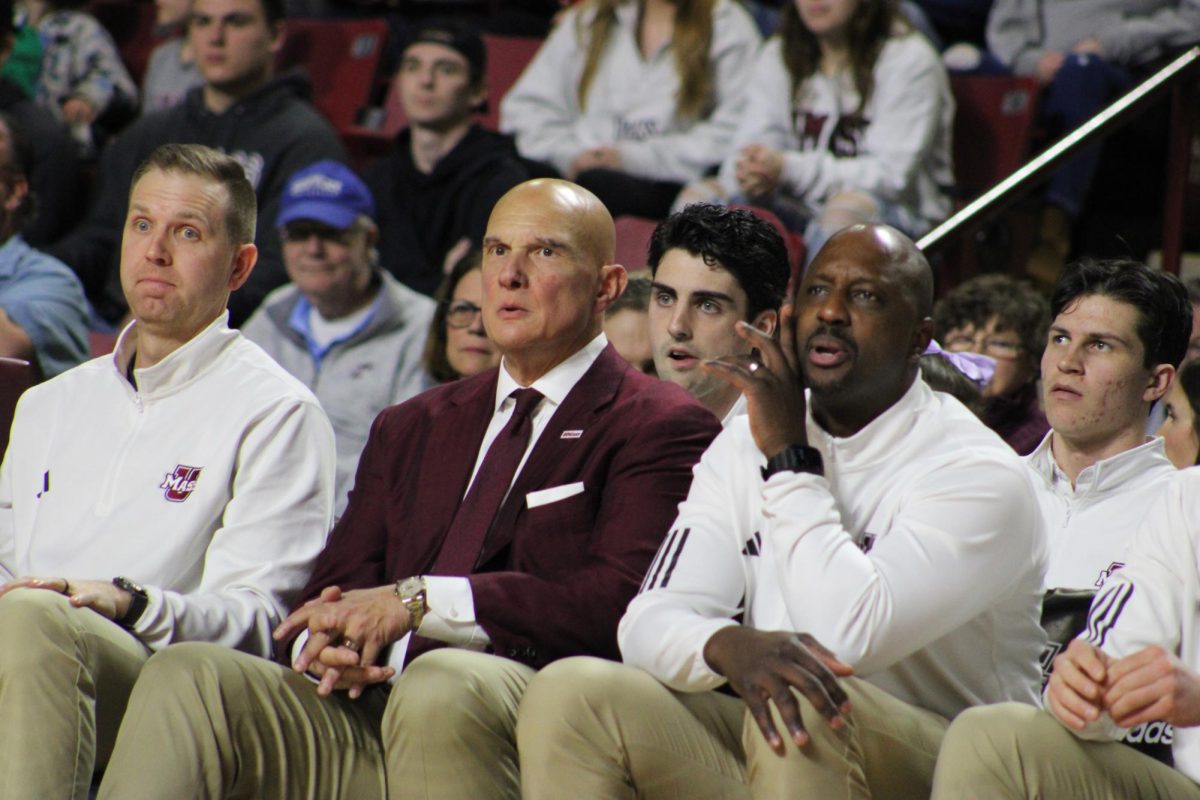


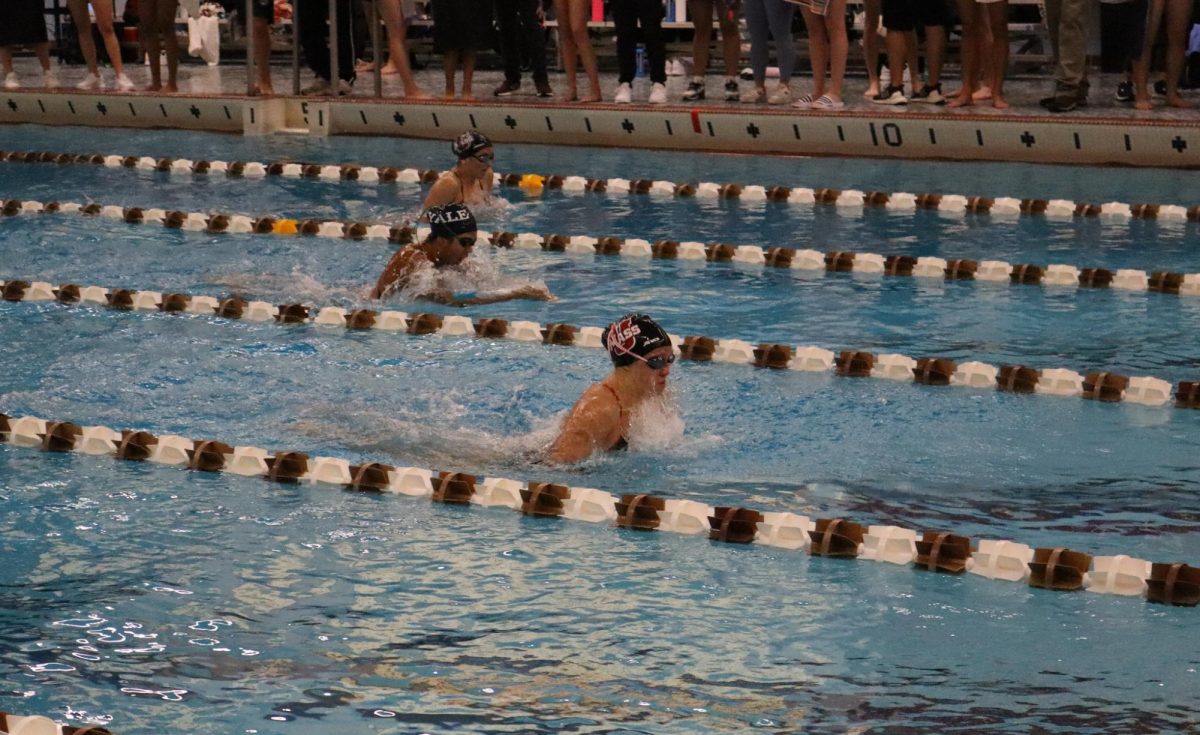
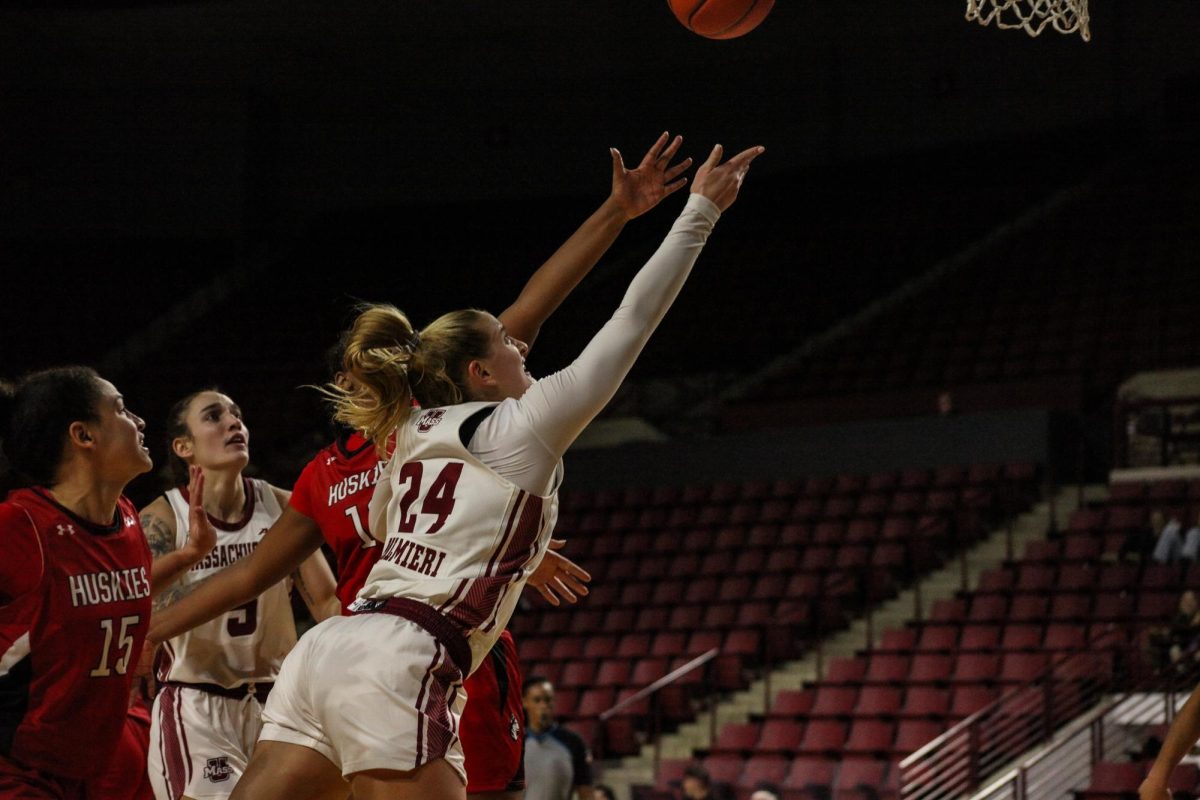
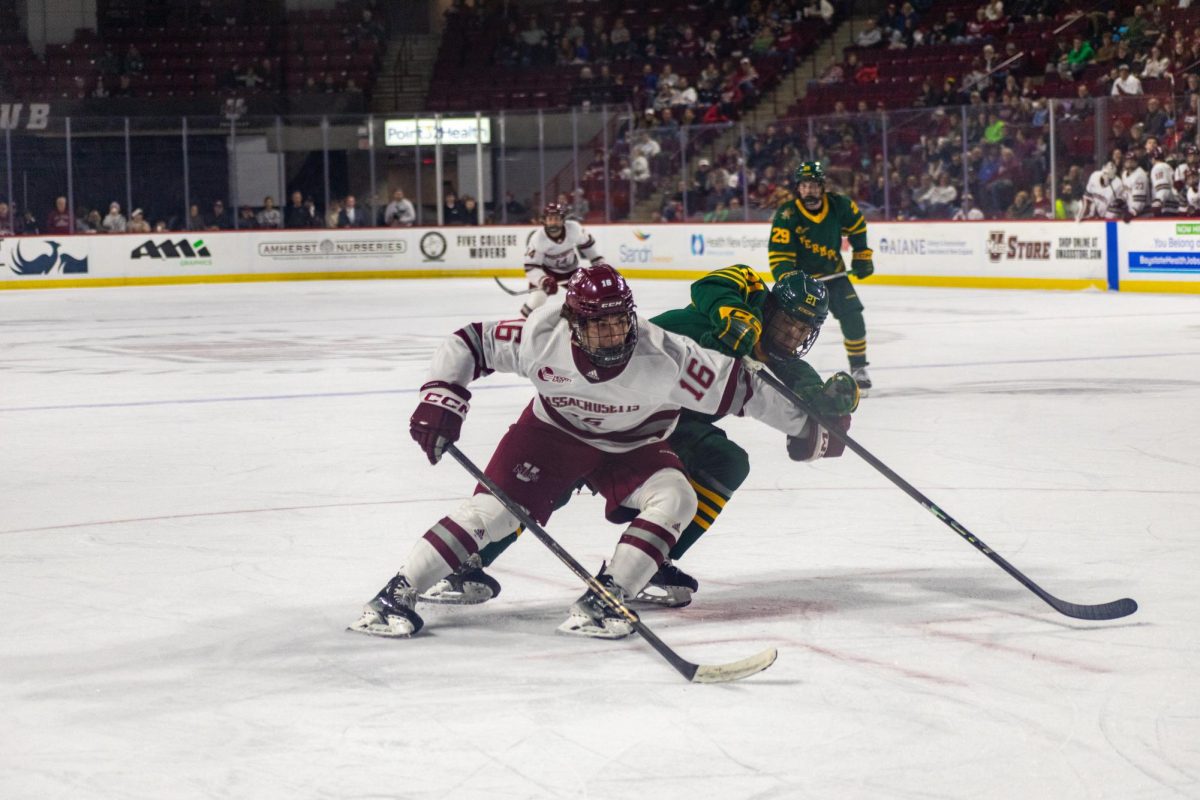
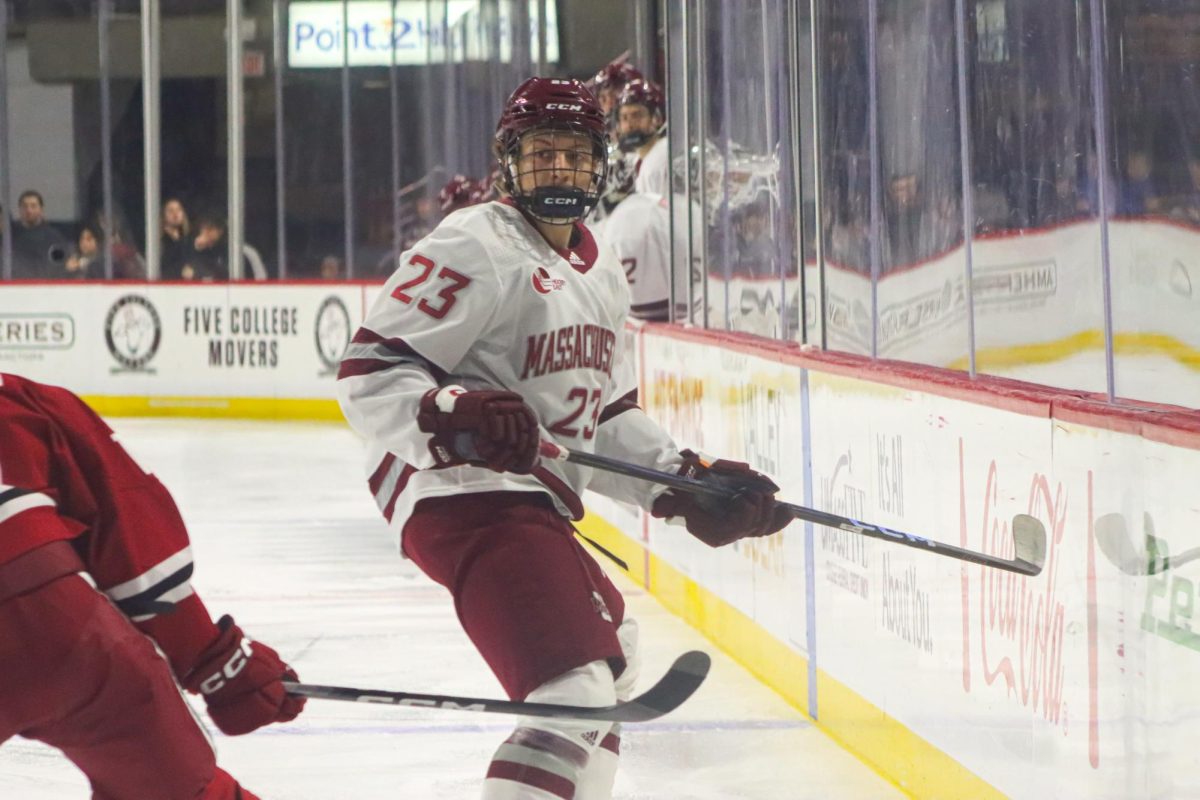
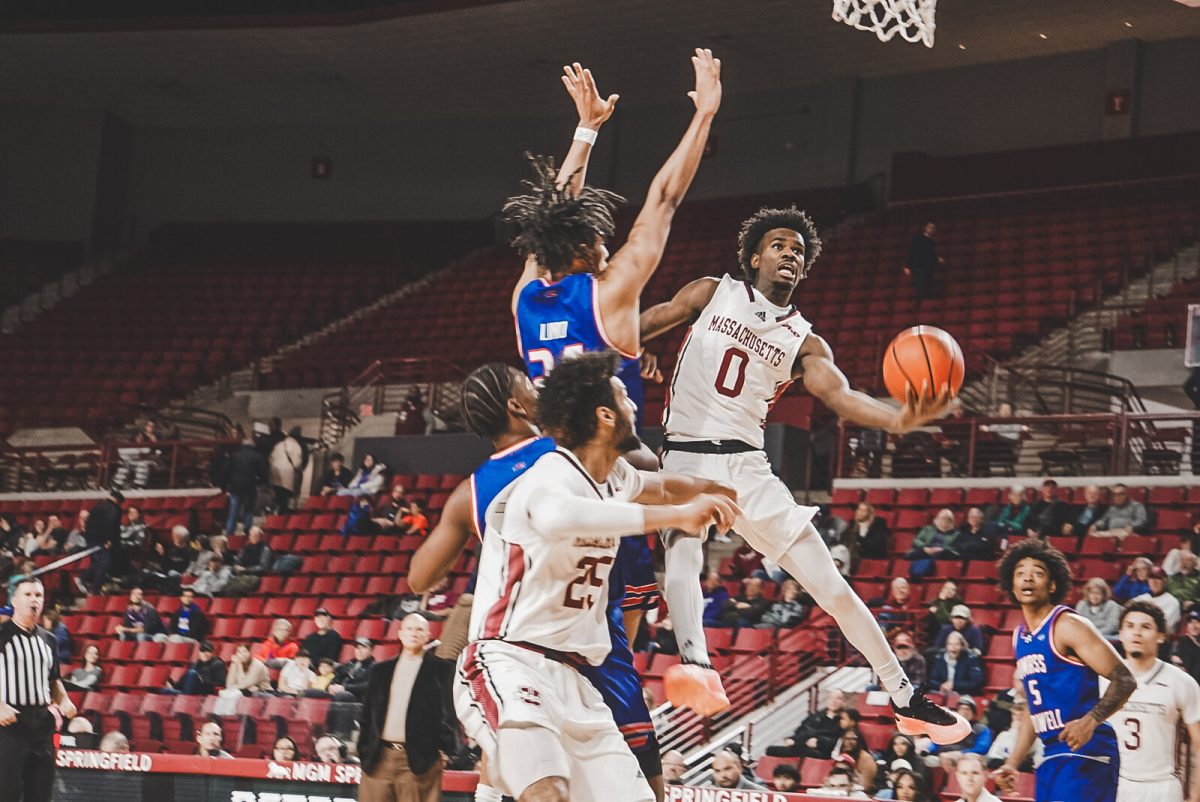






Jim • Mar 10, 2024 at 11:05 pm
Good article. I hope Frank Martin stays for a long time at UMass. It will bring the men’s game of basketball up at the MAC when UMass becomes a part of it.